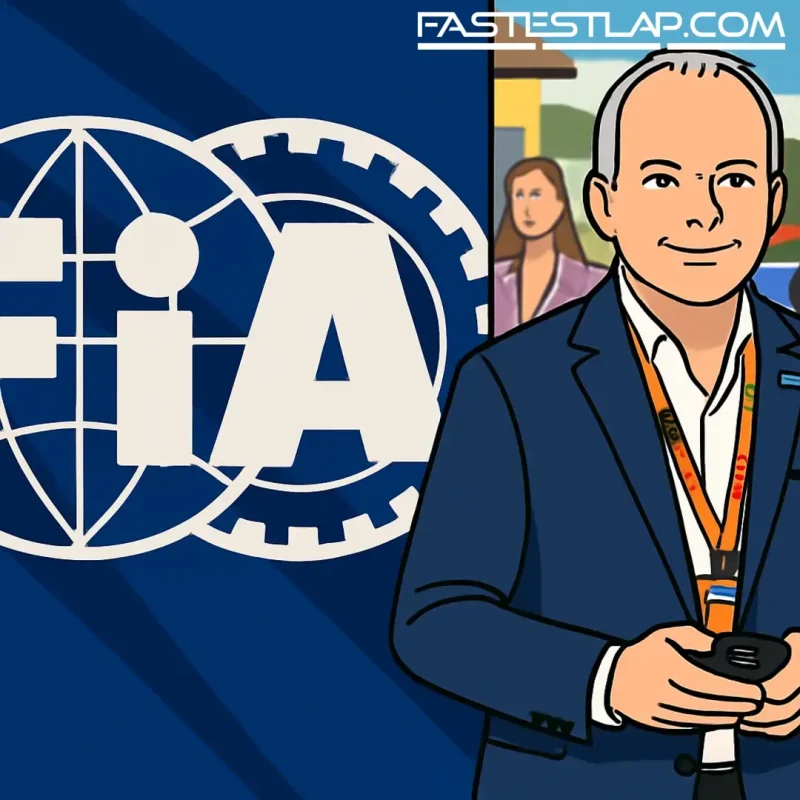FIA hits back after Tim Mayer calls presidential election “theatre” ahead of US GP
On the eve of the United States Grand Prix, the FIA moved to swat away Tim Mayer’s claim that this year’s presidential election has drifted into “the illusion of democracy,” insisting the process is “structured and democratic” and governed by long-standing statutes.
Mayer, one of three declared challengers to incumbent Mohammed Ben Sulayem, used a Friday press conference to outline why he believes December’s vote in Tashkent, Uzbekistan, is effectively over before it begins. The key flashpoint: a quirk of the federation’s rules that requires every presidential hopeful to submit a complete slate of vice-presidents, each drawn from nominees to the World Motor Sport Council (WMSC) and covering every global region.
By Mayer’s account, that door has closed for anyone not named Ben Sulayem. Nominations for the WMSC were finalised last month, and South America produced only one candidate: Fabiana Ecclestone. With Ecclestone already tied to the incumbent’s list, Mayer argued that no rival can meet the slate requirements by the October 24 deadline. “There’ll only be one candidate, the incumbent,” he said. “That’s not democracy. That’s the illusion of democracy.”
The FIA, in a statement, countered that the framework has been crystal clear for months. “The FIA Presidential election is a structured and democratic process, to ensure fairness and integrity at every stage,” it said, adding that the statutes and eligibility criteria have been publicly available since June 13 and communicated to all member clubs. The requirement for regional vice-presidents selected from the WMSC “is not new,” the federation noted. “These criteria applied to previous elections.”
Ben Sulayem is seeking a second term. Mayer, Laura Villars and Virginie Philippot had all signalled plans to be on the ballot. But unless the rulebook bends in the next few days, only the incumbent can file a complete presidential list by October 24, which would render the others ineligible for the December 12 vote.
Mayer’s criticism went further than a procedural gripe. He pointed to a dwindling pool of WMSC hopefuls compared to the last cycle and questioned why some regions produced so few candidates. “In South America, only one person stood for the WMSC. In Africa, only two,” he said, alleging that all three are aligned with the president. He name-checked Kenya’s Amina Mohamed and Mozambique’s Rodrigo Rocha, and cast doubt on the legitimacy of an eSports event he claims helped qualify Rocha—allegations the FIA did not address in its response.
“When elections are decided before ballots are even cast, that’s not democracy, that’s theatre,” Mayer said. “When choice is replaced by control, democracy is diminished.”
He hasn’t withdrawn. Instead, Mayer said he’s pursuing the federation’s internal channels, including the Ethics Commission, and has filed multiple complaints. He also questioned the transparency of the nominations committee, claiming there are no published minutes or evidence of meetings, and raised concerns over approvals he believes were exceptional. “This is power without brakes,” he said, arguing that any ethics findings would ultimately go to conflicted parties for action. Again, the FIA’s statement stuck to the rulebook: the process is defined in the statutes; the deadlines are fixed; candidates have had months to prepare.
Strip away the rhetoric and the stakes are plain. The presidential list format is designed to guarantee regional representation in the FIA’s leadership. But with a locked WMSC slate and a single South American nominee standing with the incumbent, the challengers say the ladder’s been pulled up. The federation says the ladder’s been there all along—and everyone knew how many rungs it had.
From here, the calendar is tight and unforgiving. October 24 is the cutoff for complete lists. The General Assembly convenes in Tashkent on December 12. Unless something dramatic happens with the nominations or the ethics complaints land with unexpected force, Ben Sulayem is on course to secure a second term unopposed.
As always in FIA politics, the subtext matters. Mayer’s pitch—return the body to its members, increase transparency, separate governance from influence—has found sympathetic ears in some corners. But sympathy doesn’t fill a ballot. And right now, the paperwork may prove more decisive than any stump speech.
What’s clear is that this story won’t vanish when the paddock leaves Austin. Mayer says his “real campaign” continues, aimed at clubs he believes feel muzzled by the system. The FIA, for its part, is standing on its statutes. Two narratives, one timeline, and a deadline that doesn’t negotiate.




